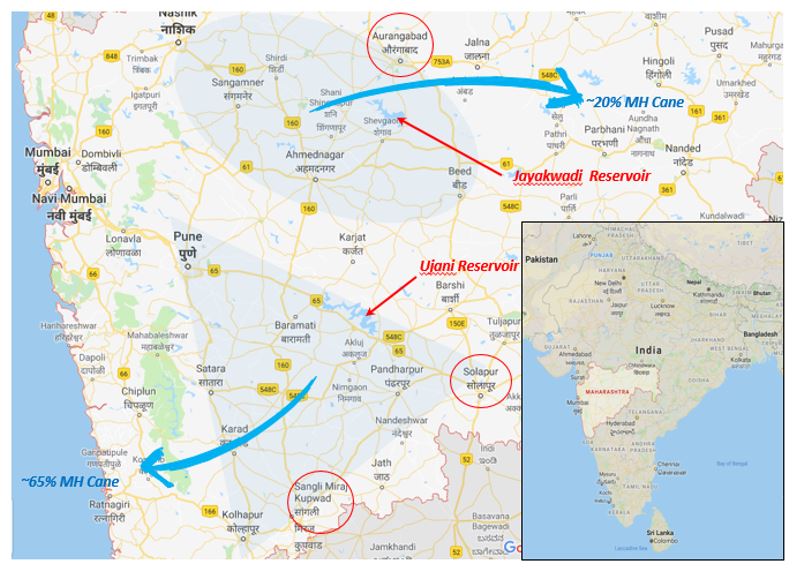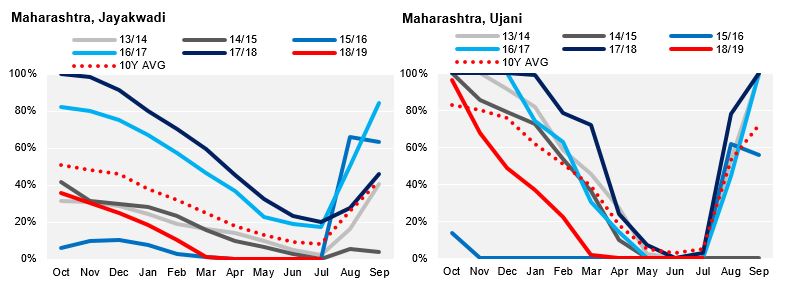- Markets have a very short memory.
- A month ago everyone panicked about the late Indian monsoon damaging cane development.
- Today, it’s normal and everyone’s moved on… should they?
Normal Monsoon Rainfall
- The two major cane regions in India are Uttar Pradesh in the north and Maharashtra/Karnataka in the south.
- There are no water availability concerns in the north; so all of the attention on the monsoon this year has been because of dry weather in the south, specifically in Maharashtra.
Maharashtra – Monsoon Rainfall to Date
Key Sugarcane Areas

- Monsoon rainfall is now within normal levels throughout most of the key cane areas in Maharashtra; the exception is Solapur.
- For the state overall, rainfall is just 6% below the long term average.
- The variability of the rainfall makes it difficult to understand the impact on cane development.
- To understand this better, and to assess whether we should be concerned at the shortfall in Solapur, we need to look at the irrigation reservoir data.
Reservoirs Are Not Filling
- The two dominant reservoirs in Maharashtra for cane irrigation are Jayakwadi in the north, which supplies cane near Aurangabad, and Ujani in the south, which supplies cane the “Golden Triangle” bounded by Pune, Kolhapur and Solapur.

- These reservoirs have been dry for more than 3 months and remain at their lowest fill level in 5 years.
- Therefore, even though everyone has become bored by the Indian monsoon, rainfall in the Aurangabad, Sangli and Solapur regions are especially important in July and August.
- Without adequate rainfall, cane cannot be irrigated and won’t develop well.

- Therefore, we still expect a 40% production decrease in Maharashtra (4m tonnes) since last year.
- This means India will produce 29m tonnes in 2019/20, above consumption at 26m tonnes.
- Stocks will build further and put more pressure on the Indian Government to continue to subsidise exports.














